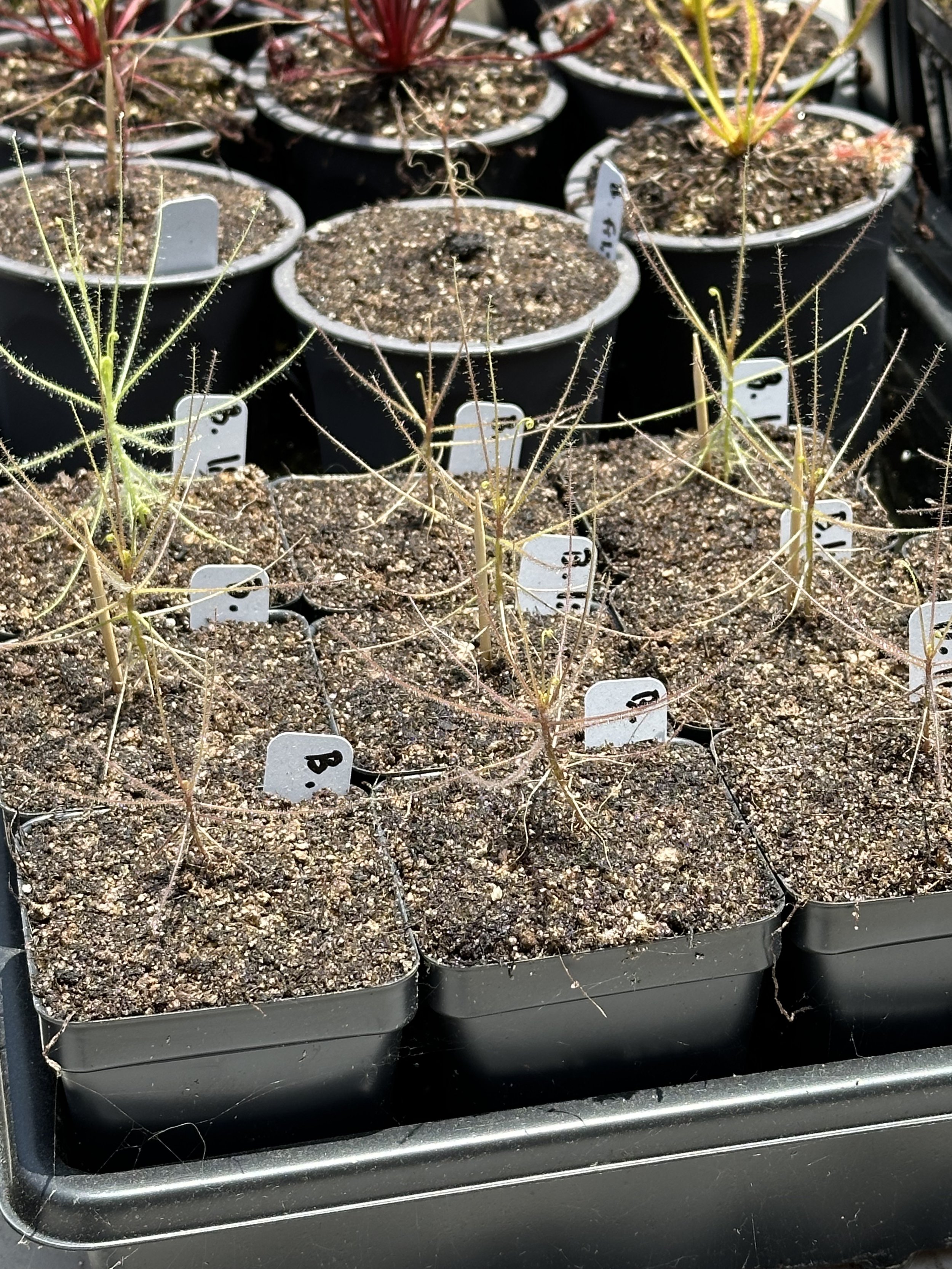Rainbow Plant (Byblis) Cultivation




General Info:
Byblis (also called Rainbow Plants) are a beautiful genus of carnivorous plants that have dew covered leaves that glisten in the light. Most grow a tall or scrambling stem with elongated leaves covered in translucent hairs that secrete a dewy mucilage. Byblis evolved carnivory independently of all the other sticky carnivores and are the only members of their entire plant family. These are especially beautiful and unique amongst the carnivorous plants!
There are two main types of Byblis, the annuals from Northern Australia and New Guinea, and the perennials from Southwestern Australia. The annual species grow in hot and wet environments in bright sun. They are easy to grow outdoors in the summer in warm climates. They will also grow well indoors under strong lights if the temperatures stay warm. Under bright light, the leaves may take on a slightly purplish color which contrasts with the bright green.
Annual Byblis species sprout from seed and grow very quickly, reaching a few inches tall within 1 month. The most common species, Byblis liniflora, grows to around 4-6” tall in a compact, miniature tree shape. Other annual species, like Byblis filifolia, will grow much taller stems that can reach 1-2 feet long, but will typically fall over after a certain height. This is natural and the plants will just repoint the tip up towards the light and continue extending.
In late summer, they will produce tons of bright purple/pink/magenta flowers. Some plants can be completely covered in flowers and this must be the most colorful display of any carnivorous plant. The flowers of Byblis liniflora easily self-pollinate, but other species require manual pollination. For these species, the pollen will not be released until buzzed by a flying insect (or some type of vibration). I use an electric toothbrush to collect pollen and manually pollinate. They produce relatively large, black seeds. After seeding, the annual plants will slowly decline, especially if the weather cools down in the Fall.
The seeds of Byblis liniflora can often germinate readily on their own, but a treatment with gibberellic acid (GA3) at roughly 500ppm for 24-72 hr can improve germination rates substantially (especially in the other annual species). Overall, these are easily to grow in warm and wet conditions, and do best with strong light.
Cultivation:
Moderate to high Light - give them a few hours of sunlight per day or at least 15-20W per square foot of LED grow lights.
Water using the tray method, keeping the pots sitting in 0.5-2” of water.
Temperatures between 60-100F are great. These love heat and don’t want to be cold for extended periods. They can adapt to lower humidity as well as they get larger.
Byblis do well in 30-40% peat moss: 60-70% sand/perlite.
Notes:
Byblis must be grown by seed as other method of propagation don’t really work.
Smaller plants appreciate higher humidity, though they can be gradually acclimated to lower humidity once larger.
Outdoors, they can tons of insects. I am testing fish food powder as a food indoors.
The annual species are lowland tropicals, the perennial species are Mediterranean climate.
While B. liniflora readily self pollinates, B. filifolia and others require cross pollination with a different individual. Manually pollinating B. liniflora can help increase seed production.